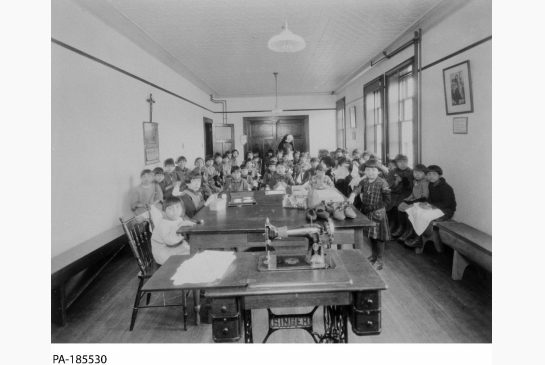Truth and Reconciliation Commission's Report Details Deaths of 3,201 Children in Residential Schools
By Joanna Smith
More than 3,000 indigenous children and youth died in residential schools — many of them buried in unmarked graves — and those who had the power to prevent these deaths did little to stop it. The heartbreaking details of those deaths are contained in the final report of the Truth and Reconciliation Commission (TRC) released Tuesday, which details the dark history and unsettling legacy of Canadian residential schools that saw 150,000 First Nations, Metis and Inuit children come through their doors for more than a century. “Today marks both an end, and a beginning,’ said Justice Murray Sinclair during Tuesday’s ceremony, asking all residential school survivors and their families to stand. “We acknowledge all of you here,” said Sinclair, who’s chair of the TRC. Two empty chairs on the stage beside him, Sinclair said, were there to honour the memory of the children who never returned from the schools. “Ours was a commission like no other.” “We did this, after all, for those who were there and for those who were with us. We did this for the children who were taken away and for the parents who were left behind to cry for them. We did this for the children of today who needed to know when and what and why things occurred, so they could understand their lives.” “Many students who went to residential school never returned,” says the final report. “They were lost to their families. They died at rates that were far higher than those experienced by the general school-aged population. Their parents were often uninformed of their sickness and death. They were buried away from their families in long-neglected graves. No one took care to count how many died or to record where they were buried.” says the final report. The 3,231-page final report — hard copies of which was to be delivered Tuesday in Ottawa to federal government and churches who were parties to the class-action settlement that led to the creation of the TRC — includes a volume titled “Missing Children and Unmarked Burials” detailing the circumstances, when known, of the 3,201 students deaths between 1867 and 2000 it was able to record. The report describes the domino effect created by not regulating the schools — largely operated by churches and funded by the Canadian government — and then not enforcing the existing regulations. The lack of a proper dietary standard meant students were undernourished, which increased their vulnerability to infectious diseases, and then the rates of infectious disease grew — again due to lack of regulation barring ill students from being admitted to the schools, as well as overcrowding. The lack of regulations regarding disciplinary measures left students open to being physically abused, which further harmed their health and increased their stress levels, leading many to run away from school — a decision that turned deadly for at least 33 students who died after they left, most commonly from exposure or drowning. The issue of missing children and unmarked burials were not originally part of the TRC mandate, but the commissioners quickly saw the need for such a line of questioning and a working group was set up in 2007. The report notes the TRC estimated it would cost about $1.5 million to complete the work recommended by the working group, and that the federal government denied its request for additional funding in 2009. “The most basic of questions about missing children — Who died? Why did they die? Where are they buried? — have never been addressed or comprehensively documented by the Canadian government. This document reports on the first systematic effort to record and analyze the deaths at the schools, and the presence and condition of student cemeteries, within the regulatory context in which the schools were intended to operate,” says the report. The TRC does not pull its punches when it comes to who was to blame. “Both the regulatory regime in which the schools operated and the level of compliance with that regime were inadequate to the task of protecting the health and safety of the students,” the report says. “Government, church, and school officials were well aware of these failures and their impact on student health. If the question is, ‘Who knew what when?’ the clear answer is, ‘Everyone in authority at any point in the system’s history was well aware of the health and safety conditions in the schools,’ ” the report concludes. The final report says the work of finding out what happened to the students who died in residential schools — a number that Sinclair has said could actually be as many as 6,000 — is incomplete. “There are many relevant documents that have yet to be reviewed. The completion and maintenance of this register will require ongoing financial support,” says the report.
|
.
Any original material on these pages is copyright © BishopAccountability.org 2004. Reproduce freely with attribution.
